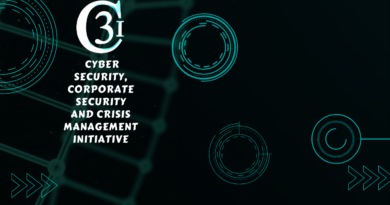The case of telegram “public room”, challenges and solutions
Аuthor: Monika Kachurova, MSc
Has a master’s degree in telecommunications, C3I member, working in cybersecurity, computer networks, telecommunication, radio equipment, and system administration.
”I didn’t know what was happening and where it was coming from. Not until the next day when I received a screenshot of my picture posted in ”Public Room” and sent it to other places as well. I didn’t know what to do, I panicked, I felt scared, I’d never experienced something like that.”
This is just one of the many stories that due to technological developments, the internet, and the enormous usage of social media, shows how and to what extent minors and women are vulnerable to harassment in cyberspace. This phenomenon, when people are humiliated, embarrassed, or in any other way harassed by other person using the Internet, interactive digital technologies as well as mobile phones, is known as ”Cyberbullying”.
Social networks give people the freedom to post personal photos, information about their personal interests, or update their exact location which allows attackers to specify certain aspects of a person’s life and make fun of. What makes Cyberbullying so dangerous is the fact that makes the attackers publicly embarrass and harass whoever they want, with various types of technology. Rapid alteration, like the communication applications, is a great challenge for the authorities in the process of identifying and locating potential predators.
One of the elements of this phenomenon is the Cyber monitoring of social media which is growing, and the target is mostly minors and women. This helps the predator to use cyberspace by monitoring and downloading personal data and photos, without any direct physical threat to the victim, just monitoring the victim’s activities on the Internet. The anonymity of the predators comes from their interaction in different groups for communication with members that often don’t know each other, so this reduces the possibility to identify them and makes cyber-surveillance more difficult than the physical one.
These types of activities and threats are not far from the reality in our country. At the beginning of 2019, the Republic of North Macedonia was shaken by a scandal when the secret group chat ”Public Room” existing on the social media ”Telegram” caught the attention of the public eye. This group chat, later removed, was filled with personal information and private photos of minors and women, shared without their consent. The recent case of re-actualization of the ”Public Room” only made things clear that the group has not disappeared but is active more than ever. ”Public Room” on the social media ”Telegram” enabled thousands of users of this group to share explicit content and personal information of innocent victims and became a call to raise awareness for more secure use of the Internet. Since this represents gender-based violence against women and juvenile victims, the consequences might be serious, from a psychological and social point of view.
One of the greatest challenges that come from these types of cases is that the users, especially teenagers, want to increase their attractiveness on social media while adding people they have never met in the real world. Consequently, they lose control over their privacy by posting personal information and interests. Although social networks have included tools to limit the visibility of our information, not everyone is aware of this way of protection or does not want to use it at all.
Dealing with this phenomenon requires a more comprehensive approach. One of the main tools for this ‘fight’ is raising Cyber awareness among all citizens. Cyber awareness represents a combination of knowledge and the action we take to protect information or personal data. This can be achieved through the introduction of Cyber awareness training programs in the education, organization of various educational events of a public character, experience exchanging seminars, as well as different trainings for the most vulnerable or affected citizens.

Special emphasis should be put on education and children’s upbringing. School curriculum should cover all the aspects of cybercrime and further provide knowledge and skills for young people to identify potential threats on time. Awareness of threats in cyberspace should be raised among the parents as well in order to properly educate their children about social networks. In short, the educational system must address contemporary issues related to cybercrime. In addition to increasing cyber awareness, another way of dealing with this issue is to establish strict legal regulatory measures that will not intrude on the privacy of the citizens and will enable faster and on-time detection of such phenomena as well as their removal. What we need is a greater and faster initiation of action against such crimes and collaboration of the mentioned institutions with the people in charge on the social media and the cyber forensic laboratories, which will lead to more effective research and identification.
Further on, a great help for institutions and potential victims will be if they report problems online, through web portals. This can reduce the number of unreported cases as a result of conservative thinking or the tendency of the parents/guardians not to involve institutions in such cases. This portal can be used as a database for potential criminals which could really help in force the law.
Due to the seeming invisibility and anonymity on the Internet, sexual harassment over the Internet has become a serious issue and a potential danger. Avoiding the Internet is not the solution, on the contrary, more information is needed about Internet safety and prevention, to raise awareness among both young and adult users. Having knowledge and skills to help the victims of Cyberbullying is essential in this new era.
This article is supported by the Metamorphosis Foundation and Techsoup. The views expressed in this publication are those of the author and do not always reflect the views of the Metamorphosis Foundation, Techsoup and C3I.[:]




